
Christmas Celebrations in Palma de Mallorca
Get into the festive spirit at Palma's annual Christmas Fair.

© Ajuntament de Binissalem

© Ajuntament de Binissalem

© Tim Milnes

© Kolau Lluca

© The Travellers Collection
Traditional rural town and wine growing region in central Mallorca
If you are familiar with Mallorcan wine, then it's more than likely you will have heard of Binissalem. This small town in central Mallorca is most famously associated with wine production. Surrounded by some of the island's best vineyards and bodegas, wine buffs should make it their mission to stop by on a trip to the island.
Aside from its wine roots, the town itself predominantly remains a sleepy, authentic, blonde sandstone Mallorcan village. There are a few bars and restaurants available servicing mainly the locals as well as a few tourists visiting the town. Binissalem lies where the Mallorcan plains meet the Serra de Tramuntana mountains, making it a popular pit-stop for outdoor enthusiasts, although many are drawn to the surrounding countryside filled with vineyards and orange and almond groves.
The town boasts excellent travel links as it is just off the main motorway travelling between Palma and Alcudia. The fact that the train service from the capital reaches Binissalem also means it is well connected to other towns around the island.
In the third week of September, the Festa des Vermar (Binissalem’s wine festival) takes place and all things wine appear on the streets, including special recipes with grapes and wine and, of course, many opportunities to taste some local potions. The most exciting part of this festival is the grape fight, where locals (and brave visitors) dress up in white clothing and paint the town purple as they pelt each other with bunches of grapes. It has to be seen to be believed! The festivities conclude with a harvest supper in which the town’s traditional dish, Fideus de Vermar, is served. This local recipe usually encompasses small noodles, red wine and mutton.
Binissalem is famed for its native stone and, at the end of May, the town puts on its annual Stone Craft Fair where this traditional craft is showcased around the streets of the town. The fair coincides with a local produce celebration, making it a popular place for locals to come together.
Binissalem’s weekly market is held every Friday morning in the square by the church. Other food and drink events are held throughout the spring and autumn, celebrating local agricultural successes.

Get into the festive spirit at Palma's annual Christmas Fair.

The Puerto Portals Christmas Market is one of the most popular in Mallorca and it will be open until January.

The charming Pueblo Español, a reconstructed Spanish village near the centre of Palma, turns into an outdoor market at the beginning of December.

The glamorous marina of Port Adriano are setting up an eco-friendly ice rink on their marina. Come and ice skate with the whole family for free!

A spectacular Christmas show, a festive market, ice skating and more at Mallorca's legendary entertainment venue.

Spain, being predominantly Catholic, worships its saints devoutly. Every day of the year has a saints name associated with it and some are honoured with celebrations. January is a busy month, with Saint Anthony's day on 17 January and Saint Inés following shortly after, on 21 January.
Viticulture was introduced to Mallorca by the Romans and Binissalem was one of the island's most prominent regions for growing wine right up until the 19th century. It famously exported high-quality produce to the rest of Europe but, like the rest of the island, this industry was completely wiped out by the plague of Phylloxera in the late 19th century.
In recent years, the wine industry has been revived and improved with Binissalem being the first area to be awarded a DO (Denominació d'Origen) in 1990.
The reputation of Binissalem red wines, made with the local grape Manto Negro, has seen the most growth during the last 20 years or so. Local growers are passionate about their product and are dedicated to raising the profile of Mallorcan wine. If you're buying, remember that 'crianza' wines are the youngest while 'reserva' and 'gran reserva' have been aged for longer.
Binissalem also developed a reputation for producing fine woodwork and stonework in the mid 20th century. There are still successful and active quarries in or near the town which are producing even today.
The most iconic piece of historic architecture in Binissalem is the 15th century Gothic church of Santa Maria de Robines, although its Neo-Gothic bell tower wasn’t completed until 1908.
Many of the buildings in town date back to the 18th century, and, in 1983, the Municipal Government of the Balearics declared Binissalem a historic-artistic site, awarding it special protection from future development.

The Port of Soller offers the only sandy beaches on the west coast of Majorca. This lovely little resort offers two beaches along it's horseshoe bay, all with golden sands and clear blue seas.
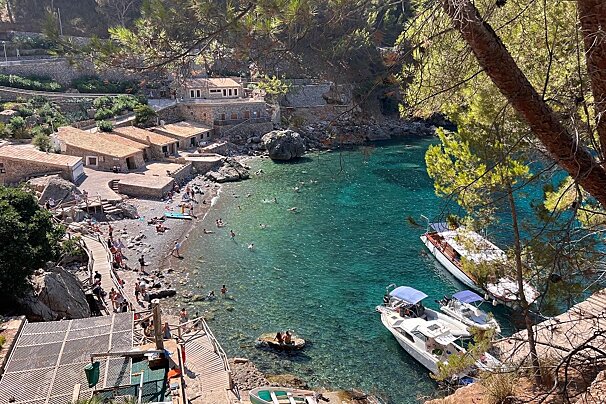
One of Mallorca’s most talked about treasures, Sa Calobra, forms an unusual cove found at the head of a gorge of the Torrent de Pareis. It’s curious location and dramatic surroundings have inspired artists for many years and still do today.
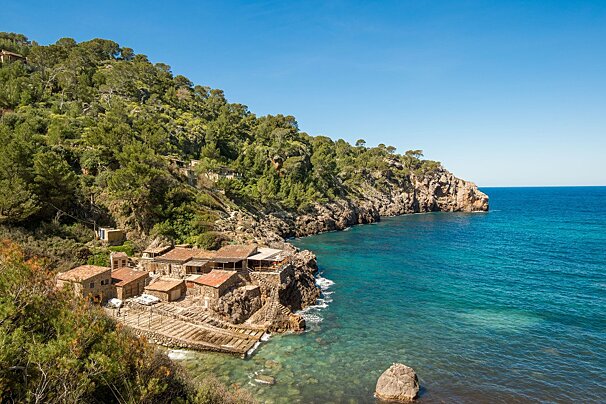
Cala Deia is a very beautiful small rocky cala with clear waters and rock pools, one of the few beaches on the west coast of Mallorca. It's quite a rugged beach here so you might need to bring a chair or a lilo to lie on.
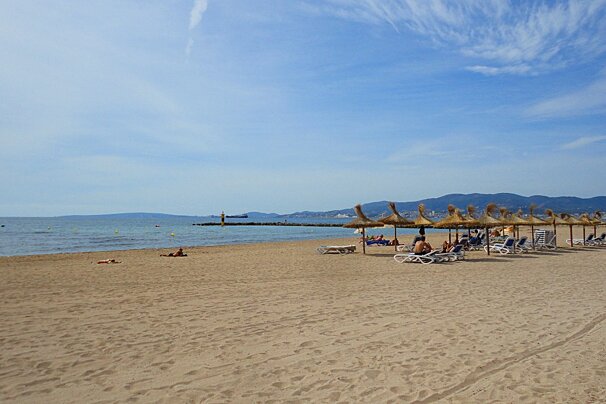
The small resort town of Ciudad Jardin lies around five kilometres east of Palma. Its beach, also commonly referred to as ‘Ciutat Jardi’, lies alongside a quiet promenade lined with palm trees, offering a huge variety of different styled bars and restaurants.
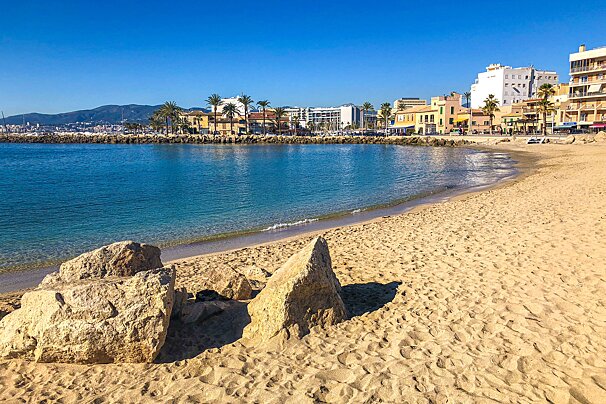
Portixol is found just to the east of Palma's cathedral and is home to a little bay within which a little sand and shingle beach known as D'es Portitxolet Beach resides. The water is generally calm here due to the sheltered nature of the bay.

Playa de Palma is a long stretch of beach to the east of Palma de Mallorca and opening onto Palma Bay. It's also one of Mallorca's biggest holiday resorts.
If you're after something truly authentic, try a traditional Mallorcan delicacy – snails.
If that particular speciality doesn't tempt your taste buds, don't worry, there are other charming places that serve quality Italian and Mediterranean dishes.

This family run restaurant open since 2012, has a welcoming atmosphere and a small but varied menu. It is the ideal restaurant for a special evening.
Unsurprisingly, wine is the main attraction in this area. Many enjoy visiting the local vineyards for tours and tastings. Most of the vineyards have shops with their wine for sale, so you can also take your favourite bottles home with you afterwards. There are lots of vineyards in the area but these are some who are especially well-versed in wine tours and tastings.
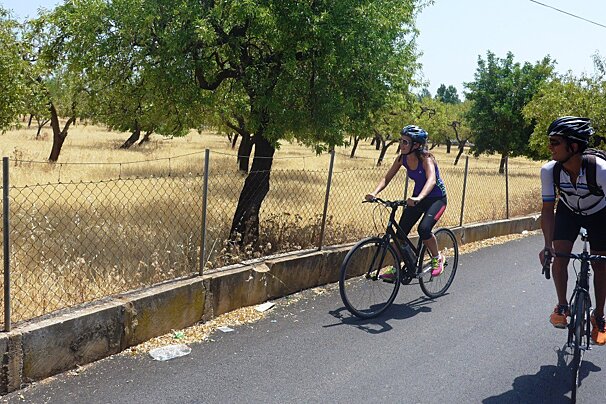
A cycling tour with Mills and Honey isn't just about cycling, it's about immersing yourself in the landscape, culture and flavours of the island.

An easy route more suited to someone with a bit of road cycling experience due to the nature of the hills and busy roads.
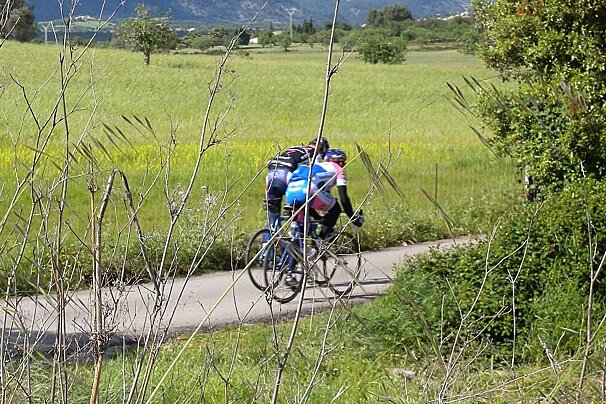
The southern end of the Sierra Tramuntana does not have the epic climbs of the north, however this rolling ride provides no less than six different summits as well as some of Mallorca's most scenic roads.
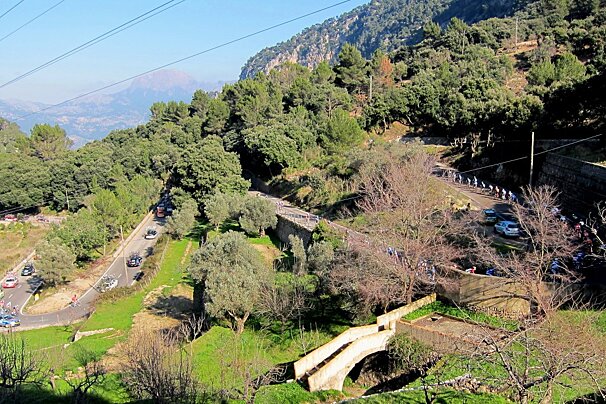
Cycling from Port de Soller along the coast and through Deia, you will then travel on to Valldemossa before heading back inland and finishing over the Coll de Soller.
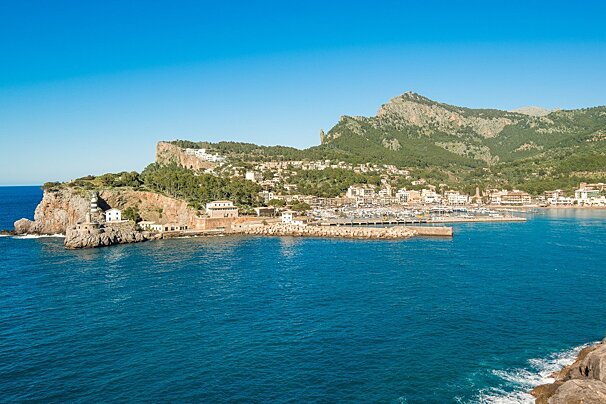
Starting and finishing in Port de Soller this ride has a half way point in Cala Deia where you ahve the chance to stop for some lunch, a snack or even a dip in the sea to cool off.
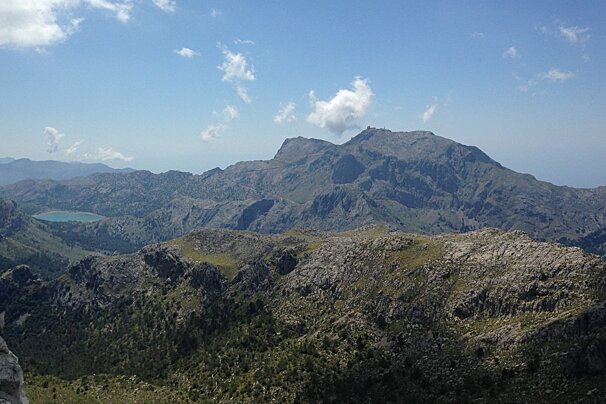
With undulating roads and an altitude gain of almost 2000m this relatively short ride, at just 75km, will get your lungs and your legs pumping.
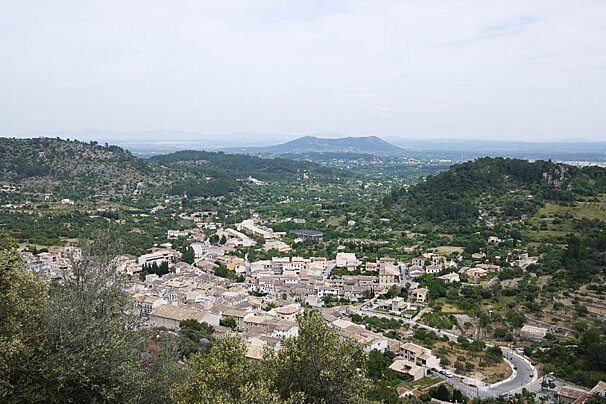
Lloseta is located in the foothills of the Tramuntana mountains, just outside Inca. You can catch a train there from Palma (Plaza de España). From Lloseta you can take the road going to Mancor de la Vall, passing by Biniamar.

Alaró is located in the foothills of the Tramuntana mountains, between Palma and Inca.

Inca can be reached either by train from Palma or by car. If you go to Inca on a Thursday, you'll be able to enjoy one of Mallorca's biggest and best markets.
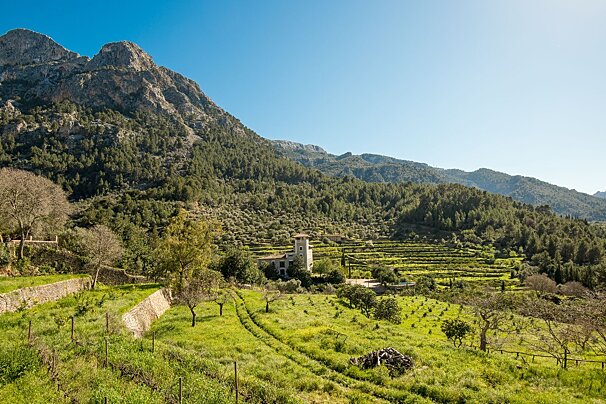
Leaving Soller and hiking through the Serra de Tramuntana valley this trail follows cobbled paths that lead to a unique sequence of cliffs, crags and stone slopes. The area was declared an asset of Cultural Interest in 1984.

The family was reunited and the sun was blazing as we left Soller for Fornalutx on the hunt for lunch.

Campanet is located in the north-west of Mallorca, about 8 km north of Inca. In Campanet, the parish church is worth a visit. It was built in 1717, and its outstanding feature is the sculpture on the altar. The church holds the relics of the Martyr San Victoriano, the complete body of the saint dressed as a warrior.
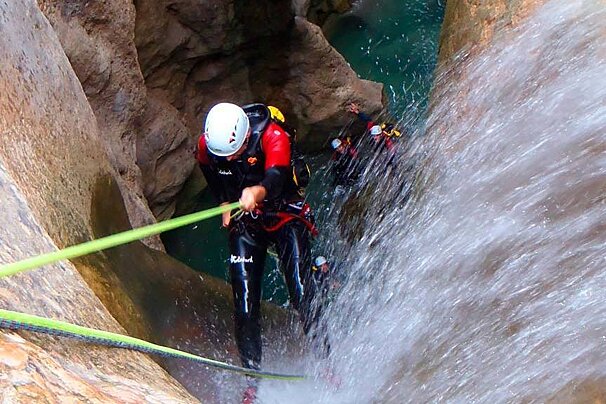
Mallorca has a great variety of canyons suitable from beginner level to advanced, with each of them offering a unique experience.

PADI International certifications are recognised all over the world. This school offers a number of courses for you to learn new skills and progress.
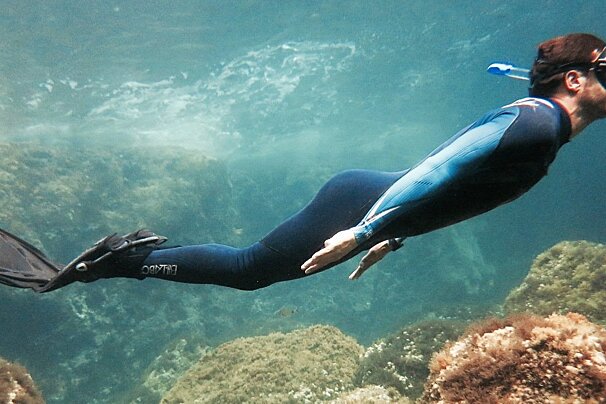
Swim in the crystal clear waters on the north-west coast and discover its stunning underwater world on this snorkelling trip

Daily trips for certified divers in a great diversity of dive sites
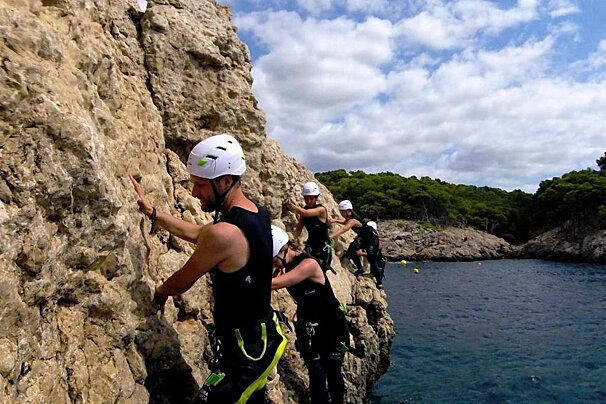
An exhilarating rock and water activity suitable for families and adrenaline-junkies, a great way to explore the coastline of Mallorca.

Enjoy an exhilarating day trekking and scrambling through gorges, waterfalls and jumping into giant rock pools.
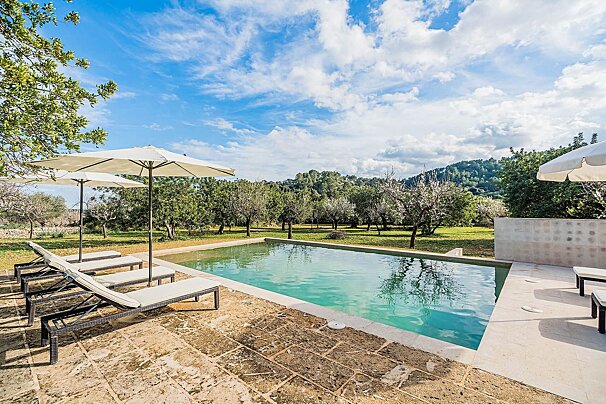
Empaltada is a truly luxury and stylish villa with private pool, combining a great privacy with classy details. The truly perfect holiday home for an unforgettable holiday on Mallorca.
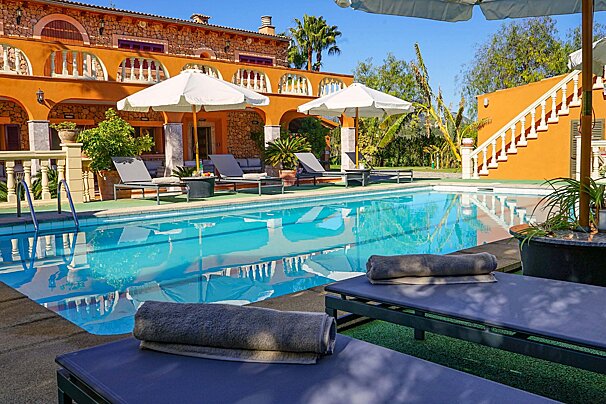
Villa Ses Porrasses is a large stone beautiful clad family villa able to accommodate 14 people in this wonderful 7 bedroom villa nestled at the foot of the Tramuntana Mountain. With it's own driveway leading up to this stunning property with a wrap around veranda, stunning views and large terraces to enjoy al fresco dining.
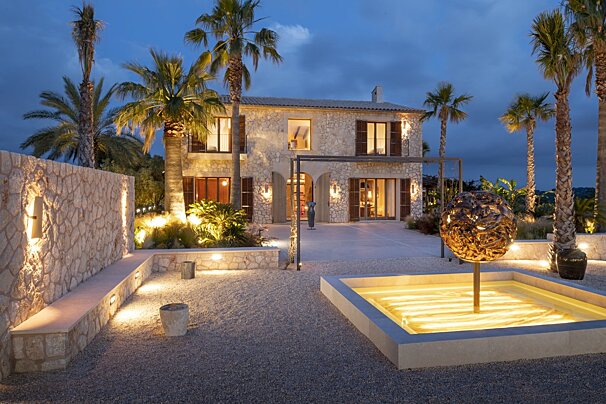
With every attention to the utmost details, the property has a beautiful harmony of Mallorcan architecture and Dutch interior designed with exquisite taste, this stylish and modern villa in Moscari exudes class and good taste.

Designed with exquisite taste, this stylish and modern villa in Moscari exudes class and good taste. With every attention to the utmost details, the property has a beautiful harmony of Mallorcan architecture and Dutch interior design.
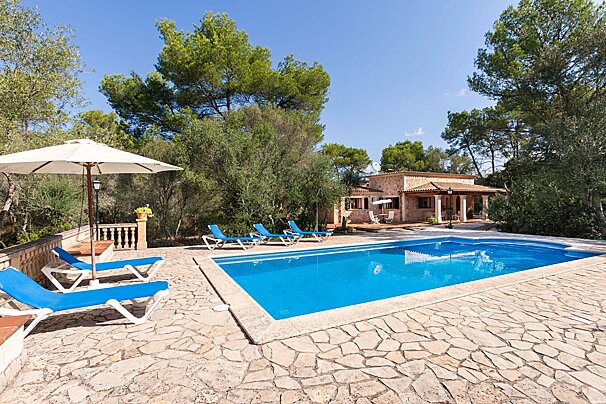
Beautifully located amongst pine and wild olive trees on the edge of the pretty rural town of Lloret lies Sa Rota de Ca'n Blanc, a charming and comfortable country hideaway from which to experience and explore the rural heartland of Mallorca.

This is a luxurious villa that has been restored from old ruins with great care to incorporate the original architecture with a modern design.
It’s all about finca and villa rentals in this part of the island and you will find plenty of choice in the countryside surrounding Binissalem. This type of accommodation tends to appeal to families and large groups looking to escape the hustle and bustle of some of the tourist spots in favour of a rural escape in Mallorca.
Alternatively, there are a couple of rural hotels nearby but nothing within the town itself.
You can expect boutique hotels housed in large old properties that are traditionally styled, with four-poster beds and antique furniture, swimming pools and wonderful restaurants with traditional local cuisine.

This hotel lies in the middle of a private estate of 150 hectares with large plantations of apple and cherry trees, cultivated fields and mountains. It is an ideal base for hiking, riding mountain-bikes or simply strolling around to watch the farmers pick cherries and apples.

Situated within a 20 minute walk to the town centre of Marratxi, it features an outdoor pool and a tour desk, as well as spa facilities.

Filicumis is a farm, built in 1828, situated on the slopes of the Tramuntana mountain range. The house is a typical Mallorcan farm with a central courtyard and a well, set in a typical Mediterranean landscape of almond, olive and fig trees.
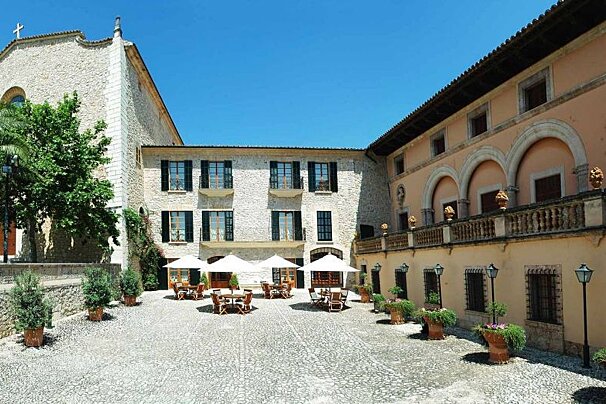
The building has a distinguished air, yet the hotel is a relaxed, friendly and comfortable place to stay.

Surrounded by gardens and Mallorcan style patios, with an extension of 10.000 m2, the house is located in Binissalem, one of the most important wine producers of the island. Within a 5 kilometres radius, there are the ten most important wine cellars of Mallorca.

Boutique hotel located in the very heart of the beautiful mountain range Sierra de Tramuntana. This country hotel has been constructed within an ancient Mallorcan finca, inside a more than 200 years old oil mill.
Car hire is very much a viable option in Mallorca. Binissalem is about a 30-minute drive from Palma airport. Or take the worry out of getting from the airport by booking a private transfer.
There is no direct bus to Binissalem from the airport, you have to change in Palma for a train.
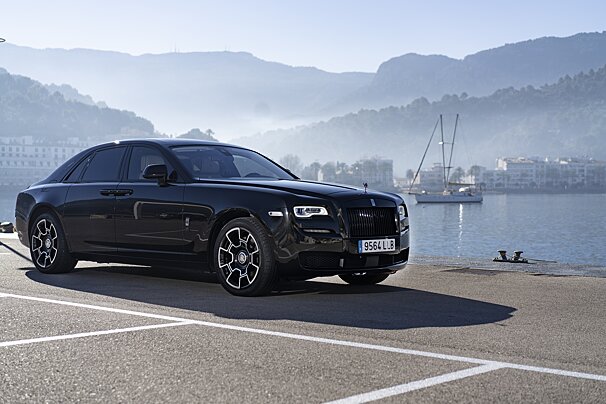
Experience luxury and convenience with this company. Arrive at your yacht charter, sunset tour or boat trip in unparalleled style in a Rolls Royce Ghost.

The established company have been offering a reliable, reasonably priced, private transfer service in Mallorca since 1993.

This transfer company offers cheap and reliable Airport Transfers to all destinations in Mallorca with official vehicles and professional drivers.

Multilingual company offering transfers from the airport to your destination.

The only British taxi driver in Mallorca, offering airport transfers to destinations throughout the island.
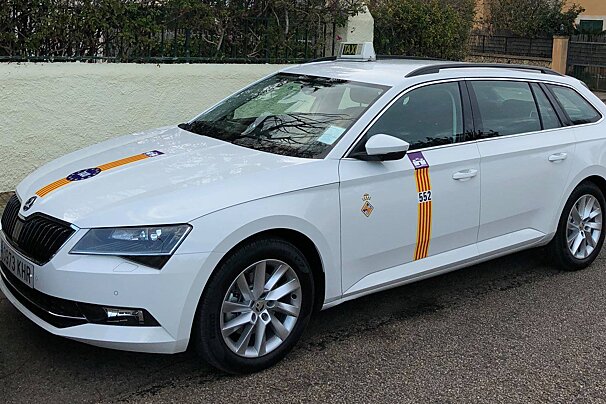
Taxi PMI is the Association of Taxi Drivers of Palma de Mallorca, who provide visitors with an efficient and reliable airport transfer service, whilst also eliminating the need to stand in a queue and wait for the next available taxi.
Find out all about what is happening in Mallorca and how to make the most of your time here. The latest news, reviews of fun activities, fabulous beaches, current events and the trendiest restaurants, as well as interviews with leading locals, insider's guides and our top choices for things to do, see, and experience on the island.
See allLatest News & ReviewsThe island hosts all sorts of events, including agricultural fairs in the spring and autumn, live music and DJs in the summer, religious fiestas and international sporting events. Some of the most popular are the Mallorca 312 cycling race in April, the Copa del Rey sailing regatta in July and the Moors vs Christians mock battle in September.
See allUpcoming Events